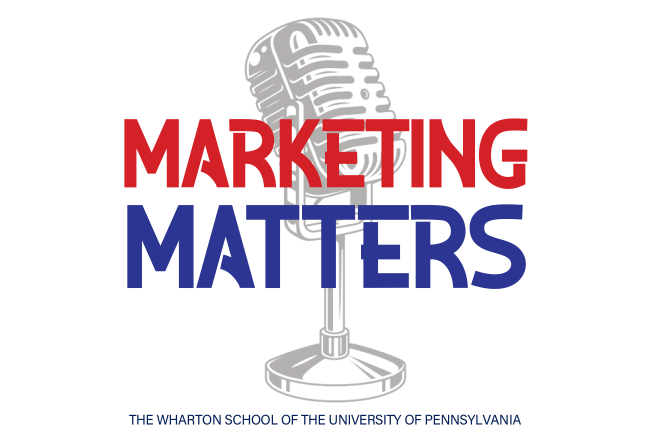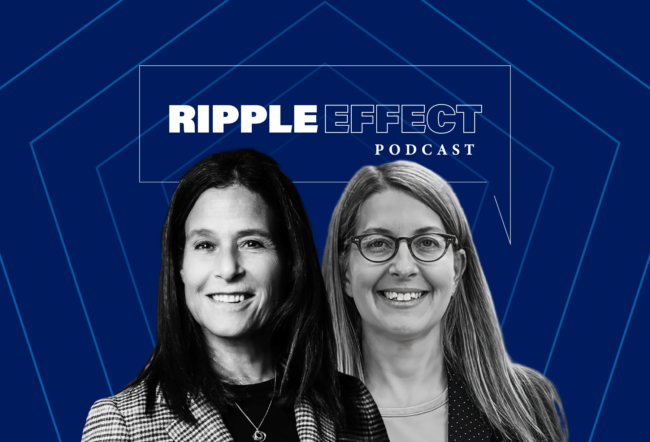Two Wharton researchers have developed a mathematical model that they say will allow companies, for the first time, to predict at what pace new products will gain acceptance in markets where purchasing decisions by knowledgeable, influential customers sway the buying habits of others.
Wharton marketing professor Christophe Van den Bulte and doctoral student Yogesh V. Joshi say their model can be put to use in industries as diverse as movies, music, pharmaceuticals and high-technology. It is possible the model may also be a way to identify directors and actors who are ready to make the leap from small films to the Hollywood mainstream, they add.
According to Van den Bulte, chief marketing officers do not need to be math whizzes to use the model: He and Joshi have developed a handy spreadsheet that incorporates a close approximation of the equations and does the forecasting for executives. Also, the model can easily be estimated employing SAS, a commercial software package popular with market research providers.
Marketers have long tried to deepen their understanding of how new products gain acceptance among customers, a process known as product diffusion. Companies are especially interested in diffusion in markets that consist of two segments: “influentials” (knowledgeable people who keep abreast of product innovations and readily accept them) and “imitators” (people whose purchasing decisions are swayed by their savvier counterparts). Targeting influential prospects who are more in touch with new developments than most people and converting them into customers, the thinking goes, allows companies to benefit from a “social multiplier” or “social contagion” effect in marketing campaigns.
In the 1990s, for example, consultant Geoffrey Moore gained attention with books like Crossing the Chasm and Inside the Tornado, which described how new high-tech products first gain popularity among technology enthusiasts and later among more risk-averse, mainstream customers. Moore’s idea of a “chasm” — that high-tech products often enjoy high sales, then suffer a sales decline, or chasm, before catching fire with customers and rising again — made him a guru in Silicon Valley.
Researchers have developed other theories in an attempt to get a handle on product diffusion. One is the “two-step flow” hypothesis, which was originally posited in the 1950s to explain the outcomes of elections. This theory suggests that ideas often flow from the news media to opinion leaders and then from the opinion leaders to the electorate at large. This old theory still influences how marketers think about opinion leadership today.
Another theory, dating from the same time, was developed by the noted sociologist David Riesman. He found that people generally fall into two categories: “inner-directed” individuals (who care little about what other people say and do) and “other-directed” individuals (who care very much, and are influenced by, what other people think).
In the early 21st century, companies have rediscovered the importance of social contagion and have developed “viral” or “network” marketing strategies to sell products. These buzzwords have entered the lexicons of business people and consumers.
For all these years, however, no mathematical model existed that could help managers quantitatively represent and predict sales evolution in two-segment markets where opinion leaders influence customers who are followers. But Van den Bulte and Joshi say they have now solved that problem, which they discuss in a paper titled, “New Product Diffusion with Influentials and Imitators.”
“Our idea was to have a mathematical model that was consistent with how managers think about their markets and that they could use to support marketing analysis and strategic decision making,” says Van den Bulte. “With our model, managers can see what will happen to sales depending on the size and behavior of each segment. Also, managers do not need to guess these unknown parameters; marketing analysts can estimate them from data about older but similar products using standard statistical software.”
Applying the Data to Movies
Van den Bulte and Joshi confirm Moore’s findings that there can indeed be a drop in sales of a new product between the time it is introduced and bought by influentials to its diffusion among imitators. But in contrast to what Moore claims, the Wharton paper says that “it need not always be necessary for firms to change their product to gain traction among later adopters and [for] the adoption curve to swing up again.”
Another important insight is that the proportion of adoptions stemming from influentials need not decrease at a steady pace but may first decrease and then increase. The management implication is that, while it may make sense for a company to shift the focus of its marketing efforts from independent-minded influentials to imitators shortly after launch, it may want to revert its focus back to independents later in the process. “Frankly, we were surprised by this mathematical result. It seems counterintuitive at first and flies in the face of the current consensus taught in most business schools,” says Van den Bulte. However, the paper not only explains why this can happen, but also backs up the claim with actual data on adoptions of a new drug from a study originally sponsored by Pfizer.
That insight has important implications for targeting and resource allocation. “Managers who confuse the distinction between influentials and imitators with that between early and late adopters — and ignore our results and others’ empirical evidence that the bulk of the late adoptions may stem from people not subject to social contagion — may end up wasting money by poor targeting,” the Wharton researchers write.
The current consensus is that movies typically exhibit one of two sales patterns over time. The first is that of a “sleeper” where only a few film aficionados go and see the movie in the first week, but then start developing buzz about it among more casual mainstream movie goers. This leads to a bell curve with low sales at first, then increasing sales, and finally declining sales as the movie reaches the end of its life in movie theaters. The second type of pattern is that of a “blockbuster” that has immediate mass appeal and opens very strongly, after which sales start declining immediately.
When applying their model to data on music CDs and movies, Van den Bulte and Joshi stumbled on a surprise — a third sales pattern in which sales first decline, but then swing up again before ultimately setting in a final decline. Intriguingly, it seems like this third pattern occurs for movies with actors or directors that are transitioning from “indie” to “mainstream.” Actress Christina Ricci and director Ang Lee exhibit this pattern. Early in her career, Ricci played in several independent movies that won critical acclaim and earned her the label “Indie Queen”. These early movies — such as The Ice Storm (1997), The Opposite of Sex (1998) and Buffalo 66 (1998) — exhibited the bell curve typical of successful “sleepers.” These were followed by a movie exhibiting a dip in ticket sales — Desert Blue (1998) — while Ricci’s recent movies are more standard Hollywood fare exhibiting the usual steady, exponential sales decline such as The Man Who Cried (2001). The same pattern holds true for movies directed by Lee: bell-shaped for The Ice Storm (1997), a temporary dip for Ride with the Devil (1999) and steady decline for his more recent Hollywood production, The Hulk (2003).
The model explains this pattern as the result of the change in segment sizes. This suggests that the model may help Hollywood studios identify actors, directors and writers who already have a small but strong following among film aficionados and are about ready to break through into the mainstream. “Entertainment companies could easily mine their historical sales data to see if our model’s ‘transition’ prediction pans out or not,” Joshi says. “If true, then this could assist producers and studios in identifying who the safer bets are with a better chance of making it big with their next movie. That, of course, is critical for casting and resource allocation decisions. The same idea applies to book publishers.”
Naming the Opinion Leaders
The Wharton model should prove useful in five areas where influentials and imitators are likely to exist. The first two are high-technology and healthcare products, including pharmaceuticals. “In these two areas, innovations are often perceived to be complex or risky, and mainstream imitators refuse to be on the ‘bleeding edge,’ unlike opinion leaders and lead users,” Van den Bulte and Joshi write. So, the two-segment structure of the model should be particularly useful there, an expectation borne out by their data.
The third area is that of entertainment and mass-culture products such as gaming software, music, books and movies, where the distinction between aficionados and the casual mainstream audience can be large.
Teen marketing is the fourth area where the distinction between influentials and imitators may be critical in the new product diffusion process. Several years ago, Procter & Gamble launched a marketing effort called Tremor as a way to connect with highly involved and influential teens, foster adoption among them, and through them reach out to the larger teen population. Categories in which Tremor and similar services have been used include not only fashion-oriented apparel and entertainment, but also more mundane, fast-moving consumer goods such as beauty aids and food.
The fifth area consists of situations where a segment of enthusiasts has pent-up demand. For instance, when Internet-access providers started operating in France in 1996, a rather large number of people adopted their services. “New adoptions dipped in 1997, only to increase again from 1998 onwards,” according to the Wharton study. “The deviation from the standard bell shape was not the low number in 1997 but the high initial number in 1996, when many university users who had been accessing the Internet exclusively through the university RENATER network were finally able to start using the Internet at home as well.”
Van den Bulte and Joshi have already extended their model to cases where the enthusiasts can place advance orders that the marketing analyst can observe. The two hope to apply this new model to CD sales data to see if pre-launch orders can provide a good forecast of total sales.
The research by Van den Bulte and Joshi also has important implications for how managers can develop more effective network marketing efforts. Several firms in the pharmaceutical industry, longtime leaders in applying marketing analytics, are now conducting surveys in which they ask physicians to name the opinion leaders in their social network. Typically, firms use this information to guide their sales representatives to the physicians deemed most influential. “That’s a good idea. However, we used our model to forecast how increasing the impact that influentials have on followers changes the diffusion process, and the results were rather dramatic,” says Van den Bulte. Hence, rather than focusing only on identifying and converting influentials, firms should also identify ways to increase their impact on other physicians.”
New Product Diffusion with Influentials and Imitators



